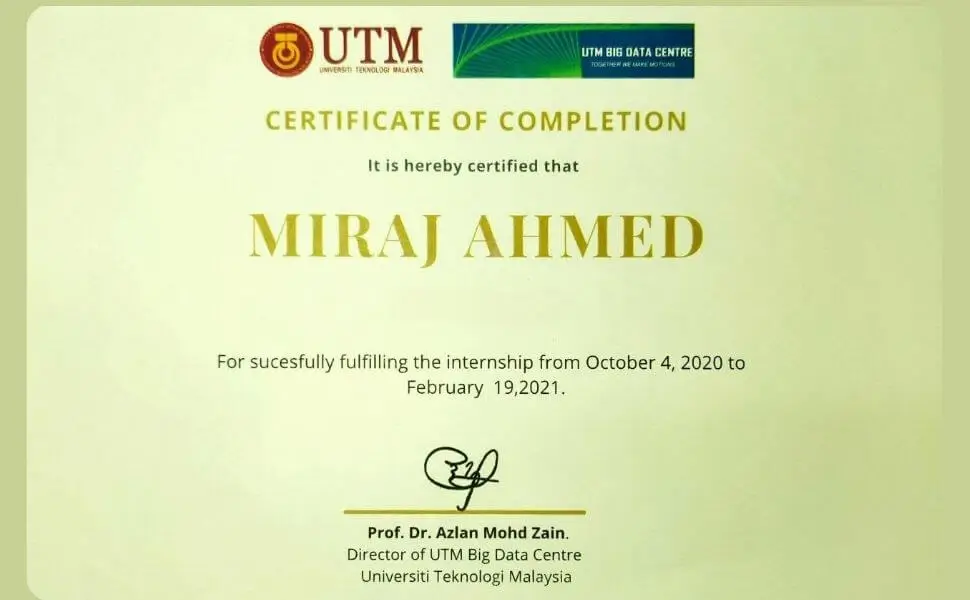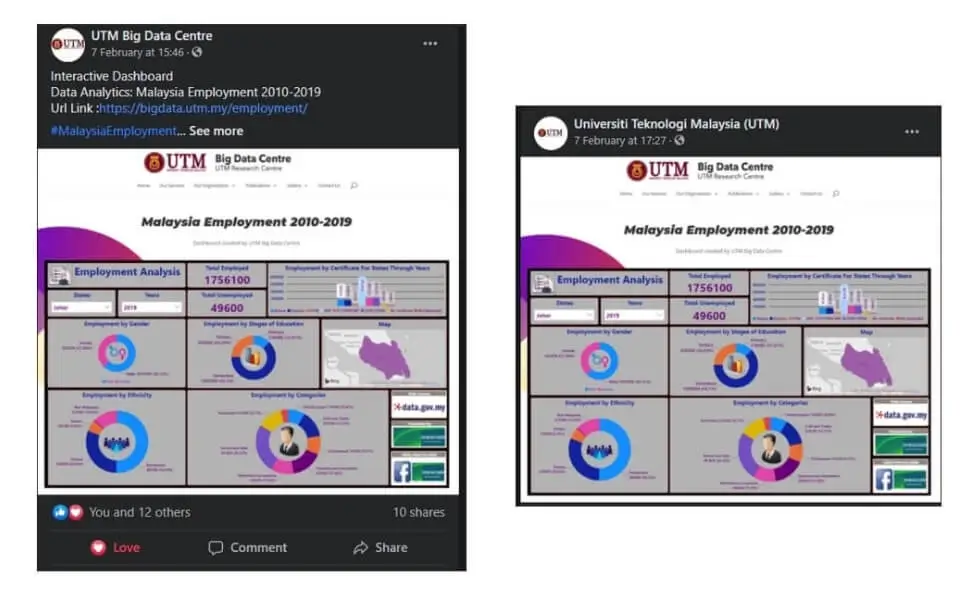Project Details
Education’s Impact on Employment in Malaysia
Project Overview
This is a research and analysis project that I had to complete within a time schedule during my internship at UTM Big Data Centre. The majority of the part went on collecting data from different sources, then validating and cleaning. Each week I had to present my progress to my supervisor and the director.

1. Ask:
The project began by defining the key questions to address:- How has education impacted employability in Malaysia from 2010 to 2019?
- What education levels correlate with higher employability rates?
- What are the employment trends by gender?
- Which job types are most popular in Malaysia?
- Which state has the highest employability rates?
- Which racial group leads in employment?
- Do individuals without formal education face higher unemployment rates?
- What were the years with the highest employment and unemployment figures?
2. Prepare:
Data was meticulously gathered and analyzed using Microsoft Excel and PowerBI. Files were securely stored on Google Drive for collaborative work and backup purposes.
3. Process:
Data was sourced from data.gov.my. Extensive data quality checks were performed to ensure accuracy and address any discrepancies, ensuring the data’s reliability for analysis.
4. Analyze:
Datasets were consolidated into a comprehensive dataset to provide a unified narrative on employment trends, allowing for thorough and holistic analysis.
The dashboard can be viewed here:
5. Share:
The integrated data was visualized in PowerBI, creating an interactive and insightful dashboard that addressed all stakeholder queries and provided clear, actionable insights.Insights
- Employment Statistics (2010-2019):
- Employed: ~13,702,660 people
- Unemployed: ~8,843,900 people
- Education Level: Individuals with at least an SPM (Sijil Pelajaran Malaysia) certification had better employment prospects.
- Gender Distribution: Males represented 62.35% of the employed workforce.
- Ethnic Group Success Rates: Bumiputera individuals exhibited higher employment success rates.
- Workforce Composition: Non-Malaysian individuals comprised approximately 14.5% of the workforce.
- Job Sectors: Service and sales occupations were the most popular.
Remarks
The project was highly successful and received recognition from both the organization and the University of Technology Malaysia, where it was showcased on their official websites.

Working closely with Professor Dr. Azlan Mohd Zain significantly reinforced my interest in pursuing a career in data analysis.